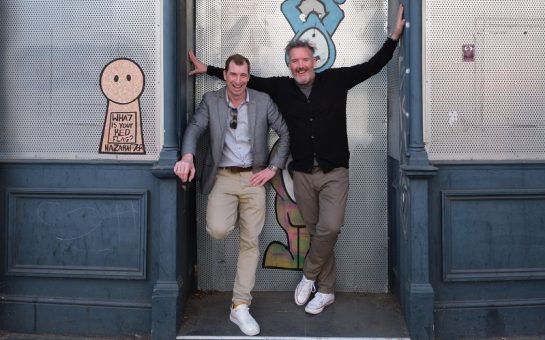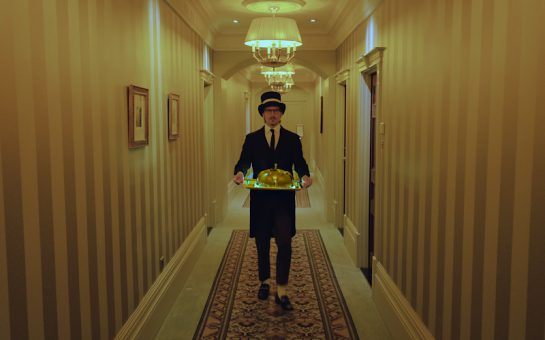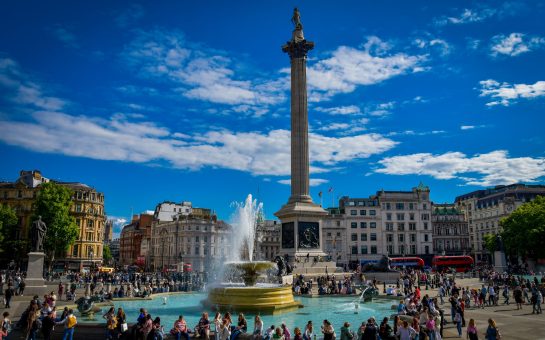Queen Elizabeth II covered at least 1,032,513 miles in her lifetime.
She visited 117 different countries, travelling the equivalent of 42 times around the globe.
Today, the 25-mile journey from Westminster Abbey to Windsor Castle was her last.
The late monarch was taken home to her husband Philip and laid to rest for the final time.
Thousands stood still as eight soldiers from the First Battalion of the Grenadier Guards carried the Queen Elizabeth II’s coffin out of her funeral. It was draped with the Royal Standard, adorned by the crown jewels and a bouquet of flowers from the royal gardens.
The ancient gun carriage was pulled by 98 pristine Navy ratings in front, 40 more behind, drilled and disciplined. The sailors took their place amid the stream of red uniforms marching in the royal procession.
Square units moved through the capital in perfect symmetry and synchronisation, save for the tossing head of a horse. The rousing drums beat 75 times per minute. Yeomans’ heads bowed as the coffin passed.
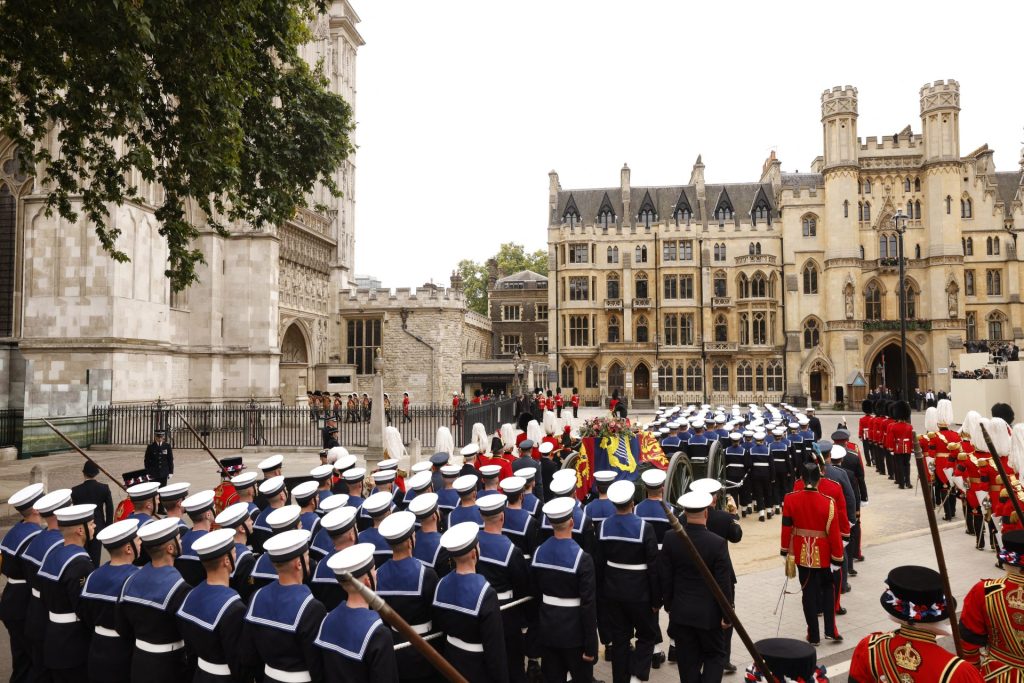
The Queen passed the Cenotaph for the last time where she had laid a remembrance wreath for 64 years of her reign. She passed through the vast expanse of sand at Horse Guards Parade where she had witnessed the Trooping of the Colour on each official birthday.
She passed the stoic bronze statue of her first prime minister, Winston Churchill, in Parliament Square. She passed her mother’s smiling statue on the Mall and her father looking proudly down at her. Members of her living family followed behind on foot.
Crowds lining the procession’s route craned their necks and stretched out phones to take pictures and film. Selfie-sticks stuck obtrusively out of the throng. Children hung on railings and perched on shoulders for a first and last glimpse of the Queen.
Police officers watched the crowds with their backs to the spectacle but the streets looked on largely in silence. Drums and brass filled the September air.
The whole procession of gleaming boots and buttons, bright red coats, polished helmets, and shining black horses stretched down the entire Mall. The golden figure of Winged Victory outside Buckingham Palace protruded in the foreground, London’s skyline in the distance.
A car carrying the Queen Consort, the Princess of Wales and her two eldest children crept behind the procession. Princess Charlotte, just seven years old, peeked out of the windows in as much awe as the crowds looking back at her.
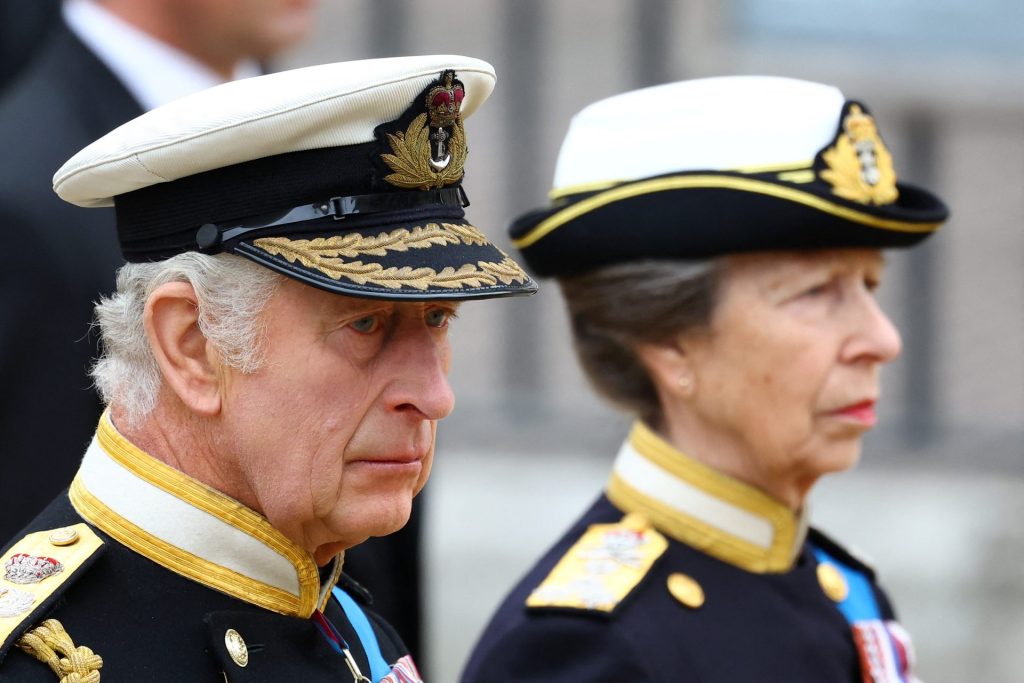
Sophie, Countess of Wessex, sat with Meghan, Duchess of Sussex in another car behind. Princess Beatrice looked tearful in her seat.
Flames stood tall on the Commonwealth War Memorial as the procession halted by Wellington Arch. The Shard and London Eye looked on in the backdrop.
There was one last salute to the Queen, one last rendition of the National Anthem and the 138 Navy ratings marched off, leaving the procession’s pomp and circumstance behind them.
The bells of Westminster Abbey rang out fully muffled and the crowds broke out into devoted applause. Flowers flew over the railings onto the hearse, petals lining the path out of the city.
Three cheers rose up just before the motorcade passed the Royal Albert Hall. Union flags waved and the public clapped in gratitude.
The Queen’s motorcade drove down the A4, the A30 and the A308 to her final resting place, her royal residence in Berkshire.
Rapturous cheers greeted the flashing lights of the first police motorcycles glittering in the tarmac’s heat. Even outside London, rows of people packed onto the route’s railings, elbow to elbow. Lorries stopped by the side of the empty motorways.
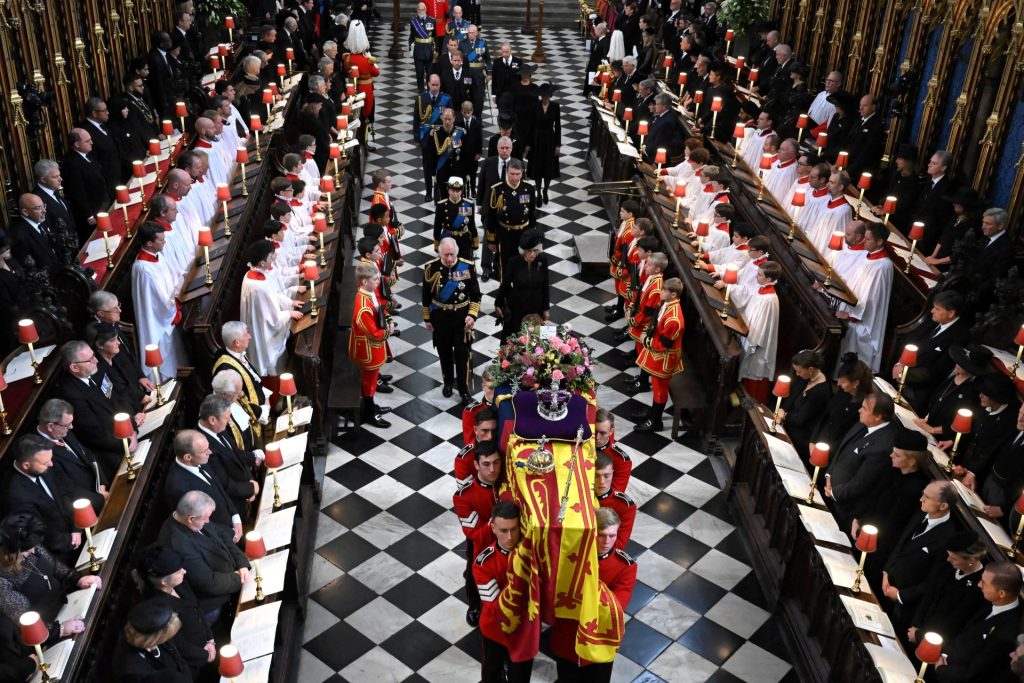
By Windsor, the bonnet and roof of the royal hearse was heaped with flower stems. By the Long Walk, lined by Royal Marines, the royal procession had regained some of the grandeur it had left behind in London.
Another escort of red uniforms met the coffin of Queen Elizabeth with their weapons reversed in mourning, leading it down Albert Road to the majesty of Mendelssohn’s Funeral March.
Crowds, tens of rows deep, flanked the historic path in silence. King George III astride The Copper Horse loomed in the distance. Mendelssohn faded into bagpipes into Beethoven into Chopin into the solemnity of drums and horse hooves again.
The hearse drove through Cambridge Gate, carpeted on either side by bouquets. Emma, the Queen’s favourite horse, stood swishing her tail as the procession passed.
The minute gun fired. The Sebastopol bell chimed. The Royal Standard flew atop the Round Tower: the new King was home, waiting to say goodbye to his late mother, the nation’s grandmother, our Queen.
Featured image: Reuters

